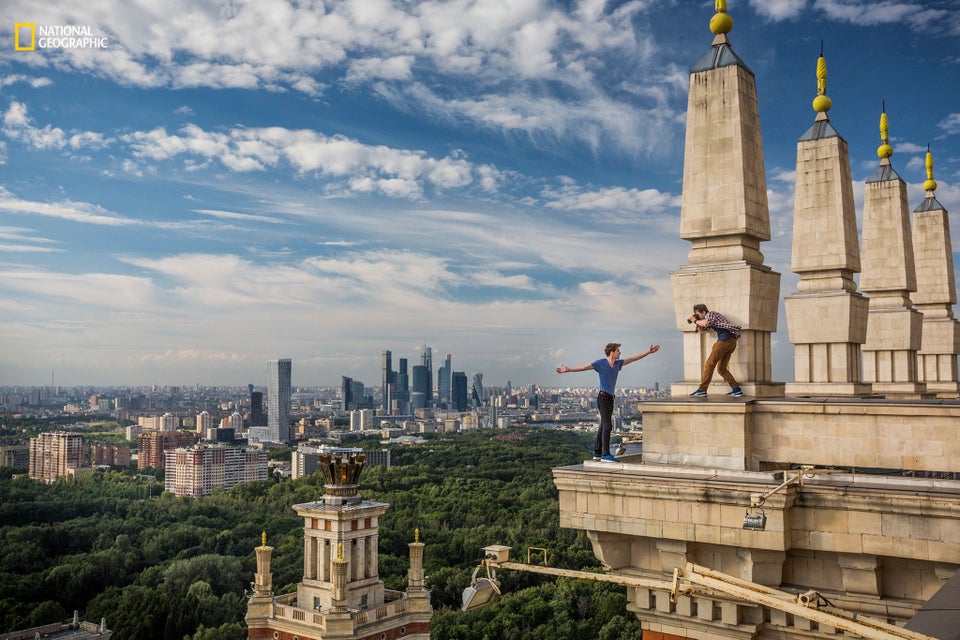
The Uttar Pradesh Assembly polls are taking place in the 25th year of the demolition of the Babri Masjid. Election eve is a good time to reflect on how the event so large then, influencing so significantly the politics and elections of that time is viewed today. Communal polarization will depend largely on how the face off between the Samajwadi Party and the Bharatiya Janata Party shapes sentiment on the politically festering remains of the 16-century mosque.
But the pitch for Hindu resurgence is on the back-burner today with hardliners gagged. Not so long ago, the Muzaffarnagar riots had spurred BJP's sweeping performance in the region during the parliament elections. One of the accused, Sanjeev Balyan, became a minister. The Dadri lynching and the reign of the Gau Rakshaks signaled dark clouds of further polarisation.
BJP, against expectations, has not lined up Ramjanmabhumi firebrands such as Yogi Adityanath or Sangeet Som for the UP elections. Samajwadi Party's Azam Khan has also not stepped out to bat for the Muslims. There were posters after the 'surgical strikes' depicting Narendra Modi as Lord Ram and Nawaz Sharif as Ravana, coinciding with Dussehra. Such hyperbole has become muted.
Modi did not tom-tom the surgical strikes himself. In pushing for an end to triple-talaq, Modi has tried to endear himself to Muslim women. He said, "It is the responsibility of the government and people of the country to give justice to Muslim women". Modi, during various earlier election campaigns, has commented on the pink revolution (beef), the Bangladeshi immigrants, and "a particular community" in the 2015 Bihar Assembly election.
But now, Modi is realizing that even with his political hat, he is the Prime Minister and his party can't be linked with communal polarisation. The Supreme Court has recently ruled that election campaigns cannot be run on religion. The Election Commission's censuring of Sakshi Maharaj for his "four wives" jibe suggests that the body isn't going to just look away at such wayward remarks.
The major issues emerging in this election have less to do with the Babri Masjid and the Ramjanmabhumi, but rather of demonetization as an anti-corruption measure, family feuds reflective of the realignment of the forces of modernization and tradition, caste identities and inclusiveness.
One is wary of drawing conclusions on the state of communal politics in U.P. But in the electoral battleground of the Hindi heartland so far, the shift is perceptible, as BJP and SP both appeal to the aspirational voter from different communities and castes, toning down the rhetoric of divisiveness and polarization. The pitch is for development, metro-rails, inclusion and "sabka saath, sab ka vikas".
Recent ground reports, snap polls, on-line surveys in UP point to an encouraging BJP graph in UP. This makes Muslims apprehensive. The general perception is that the BJP political capital is going up, notwithstanding the hardships faced due to demonetisation. It is likely that Muslims will vote collectively and strategically to defeat the BJP candidates, though the Shia-Sunni approach to elections still remains to be seen.
Muslims constitute over 19 percent of the State's population. It is a large community. No political party can alienate it. At the same time, the BJP hardly appears representative and inclusive. BJP does not have any Muslim MP in the Lok Sabha. Neither is there a single Muslim candidate in the BJP's first list of 149 announced on 16th January. In contrast, the BSP has fielded 97 Muslim candidates. The Samajwadi Party and the Congress are yet to announce their lists.
It will be uphill for the BJP to induce the Muslim voter. The comfort in the belief that the vote will be divided between BSP, SP (two-factions) and Congress, seems to have fast receded with the Samajwadi Party and the Congress Party combine a done deal, and a further alliance with the Rashtriya Lok Dal alliance on the anvil. At this juncture, the BJP could tread carefully, allowing the Muslim voter to be drawn into the BJP's "inclusion" agenda or trigger issues conducive to consolidating the Hindu vote.
On the practical side, Babri Masjid is slowly becoming history with BJP, too, not wishing to stoke its embers. With the matter stuck in the Supreme Court and the Centre mum, there is only so much that the local firebrands can say.
From Mulayam To Akhilesh
BJP was not the only party that used Ayodhya to develop and nurture their own constituencies. Babri Masjid was central to the political evolution of Mulayam Singh Yadav (MSY). His branding as protector of the Muslims came from the Ayodhya movement, its epicentre being the Babri Masjid.
The subject was predominant in Mulayam's first Chief Minister tenure (December 1989 to April 1991), though demolition of the Babri Masjid took place much later. The BJP representatives in the UP Assembly went up from 57 in 1989 to 221 in 1991, while the seats of Mulayam Singh Yadav's Janata Dal came down from 208 in 1989 to 92 in 1991.
It is noteworthy that the BJP and Janata Dal were together in making the National Front government under Prime Minister Vishwanath Pratap Singh (December 1989 to November 1990). MSY's first term as Chief Minister (December 1989 to April 1991) was supported by BJP, withdrawn after the firing on the kar sevaks (October 1990), when Congress stepped in to prop up the government.
Two elements – protector of Muslims and Lohiavadi anti-Congress stance continue to reflect in MSY's world-view. But his son and chief minister of Uttar Pradesh, Akhilesh Yadav, is different. For one, MSY was anti-elitist, Akhilesh himself belongs to the privileged class, and is able to connect with various classes effortlessly. He does not carry his father's political and philosophical baggage including the Babri Masjid issue.
To what extent can it be said, a quarter century after the Babri Masjid's demolition, that the "old order changeth yielding place to new ..." remains to be seen.
Also on HuffPost India:
